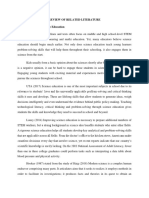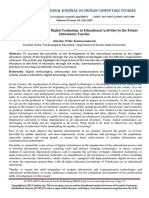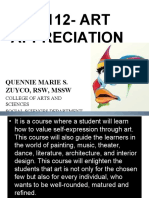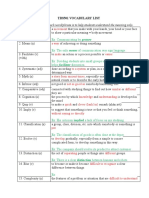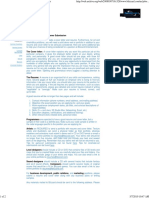0% found this document useful (0 votes)
80 views9 pagesTechnology Integration in Education
This document discusses the role of technology integration in developing 21st century skills and competencies in life sciences teaching and learning in South African schools. It notes that the Fourth Industrial Revolution presents opportunities for pedagogical innovation through technologies like laptops, smartboards, and online learning platforms. These technologies allow connectivity, communication, collaboration, and problem solving. The use of digital technologies drives innovation and fosters creativity in teachers and students. However, technology integration in schools is influenced by a lack of technological knowledge and the ability to successfully integrate technologies. The relationship between technology integration and developing 21st century skills requires further examination.
Uploaded by
Kirst Michiko PunsalangCopyright
© © All Rights Reserved
We take content rights seriously. If you suspect this is your content, claim it here.
Available Formats
Download as DOCX, PDF, TXT or read online on Scribd
0% found this document useful (0 votes)
80 views9 pagesTechnology Integration in Education
This document discusses the role of technology integration in developing 21st century skills and competencies in life sciences teaching and learning in South African schools. It notes that the Fourth Industrial Revolution presents opportunities for pedagogical innovation through technologies like laptops, smartboards, and online learning platforms. These technologies allow connectivity, communication, collaboration, and problem solving. The use of digital technologies drives innovation and fosters creativity in teachers and students. However, technology integration in schools is influenced by a lack of technological knowledge and the ability to successfully integrate technologies. The relationship between technology integration and developing 21st century skills requires further examination.
Uploaded by
Kirst Michiko PunsalangCopyright
© © All Rights Reserved
We take content rights seriously. If you suspect this is your content, claim it here.
Available Formats
Download as DOCX, PDF, TXT or read online on Scribd
/ 9









